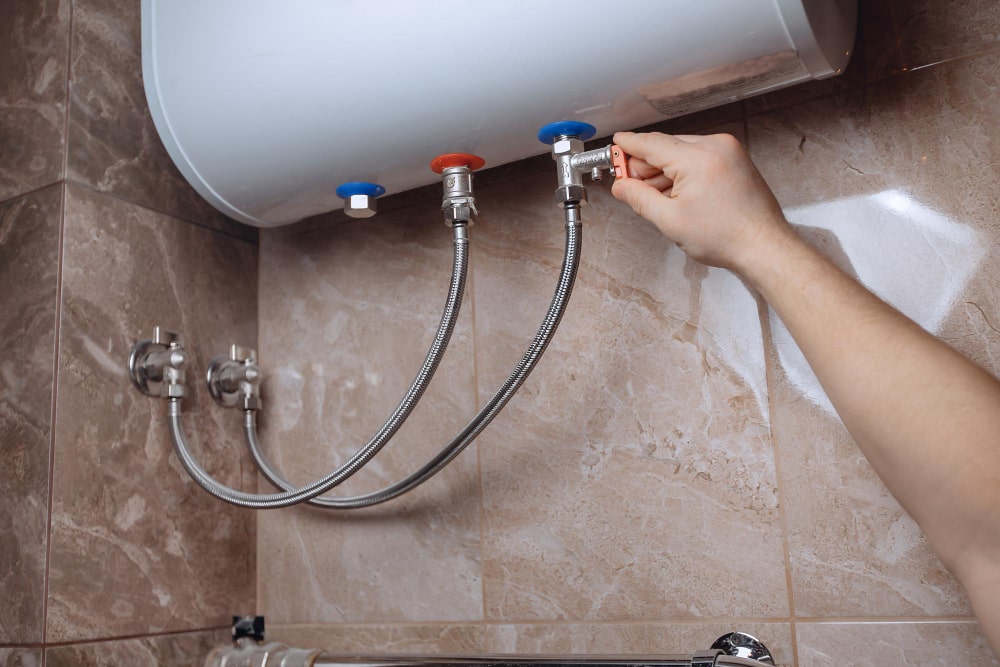We've found this great article about Tips For Maintaining Your Hot Water Heater directly below on the net and accepted it made sense to share it with you in this article.

Warm water is crucial for daily comfort, whether it's for a rejuvenating shower or cleaning recipes. To ensure your hot water system runs successfully and lasts much longer, regular maintenance is key. This post gives practical suggestions and insights on exactly how to keep your home's warm water system to prevent disturbances and pricey repairs.
Introduction
Preserving your home's hot water system may appear difficult, yet with a couple of straightforward steps, you can ensure it operates smoothly for years ahead. This overview covers every little thing from understanding your hot water system to DIY upkeep tips and recognizing when to employ specialist aid.
Relevance of Keeping Your Warm Water System
Normal upkeep not only prolongs the life expectancy of your hot water system but also ensures it runs successfully. Disregarding upkeep can bring about lowered performance, greater energy bills, and even early failing of the system.
Indications Your Hot Water System Requirements Maintenance
Knowing when your warm water system requires focus can avoid major problems. Look out for signs such as irregular water temperature level, odd noises from the heating system, or corroded water.
Flushing the Water Heater
Purging your hot water heater eliminates sediment accumulation, enhancing efficiency and lengthening its life.
Monitoring and Replacing Anode Rods
Anode poles stop rust inside the container. Evaluating and replacing them when worn out is critical.
Complicated Problems Calling For Expert Help
Instances include significant leaks, electric issues, or if your hot water heater is constantly underperforming.
Regular Expert Maintenance Perks
Professional upkeep can include detailed assessments, tune-ups, and making certain compliance with safety requirements.
Inspecting and Readjusting Temperature Setups
Adjusting the temperature level setups guarantees optimum performance and security.
DIY Tips for Maintenance
You can execute a number of maintenance jobs yourself to maintain your warm water system in top problem.
Checking for Leaks
On a regular basis examine pipelines and links for leakages, as these can bring about water damages and greater costs.
Understanding Your Warm Water System
Prior to diving into maintenance tasks, it's handy to recognize the fundamental parts of your warm water system. Normally, this consists of the water heater itself, pipelines, anode poles, and temperature controls.
Monthly Upkeep Tasks
Normal monthly checks can assist capture small issues prior to they rise.
Evaluating Stress Alleviation Valves
Testing the pressure safety valve guarantees it operates properly and stops too much stress buildup.
Protecting Pipelines
Insulating warm water pipes minimizes warmth loss and can save energy.
When to Call an Expert
While do it yourself upkeep is beneficial, some issues need expert experience.
Conclusion
Regular maintenance of your home's warm water system is important for effectiveness, durability, and expense savings. By complying with these ideas and recognizing when to seek expert assistance, you can make sure a trustworthy supply of warm water without unanticipated disturbances.
How to Maintain an Instant Hot Water Heater
Before tinkering with your hot water heater, make sure that it’s not powered on. You also have to turn off the main circuit breaker and shut off the main gas line to prevent accidents. Also turn off the water valves connected to your unit to prevent water from flowing into and out of the appliance. 2. When you’re done, you have to detach the purge valves’ caps. These look like the letter “T” and are situated on either side of the water valves. Doing so will release any pressure that has accumulated inside the valves while at the same time avoid hot water from shooting out and burning your skin. 3. When the purge valves’ caps are removed, you have to connect your hosing lines to the valves. Your unit should have come with three hoses but if it didn’t, you can purchase these things from any hardware or home repair shops. You can also get them from retail stores that sell water heating systems. Read the user’s manual and follow it to complete this task properly. When the hosing lines are connected, open the purge port’s valves. 4. You should never use harsh chemical cleaners or solutions when cleaning your unit. Make use of white vinegar instead. It should be undiluted and you’ll probably use about 2 gallons. 5. Now flush your water heater. This task should probably take about 40 minutes. We can’t give you specific directions for this because the procedure is carried out depending on the type, model and brand of your heater. With that being said, refer to the user’s manual. 6. When you’re done draining the unit, you have to turn off the purge port valves again. Remove the hosing lines that you earlier installed on each of the water valves. Put the valve caps (purge port) back in their respective places and be very careful so as not to damage the rubber discs that are found inside these caps. 7. Now that everything’s back in place, check your user’s manual again to find out how to reactivate your water heating system. 8. Once it is working, turn one of your hot water faucets on just to let air pass through the heater’s water supply pipes. Leave the tap on until water flows smoothly out of it. https://www.orrplumbing.com/blog/2014/september/how-to-maintain-an-instant-hot-water-heater/

I'm certainly very taken with Tips For Maintaining Your Hot Water Heater and I hope you enjoyed reading the entire blog entry. Sharing is nice. Helping people is fun. I enjoy reading our article about Tips on Maintaining a Water Heater.
Explore Now